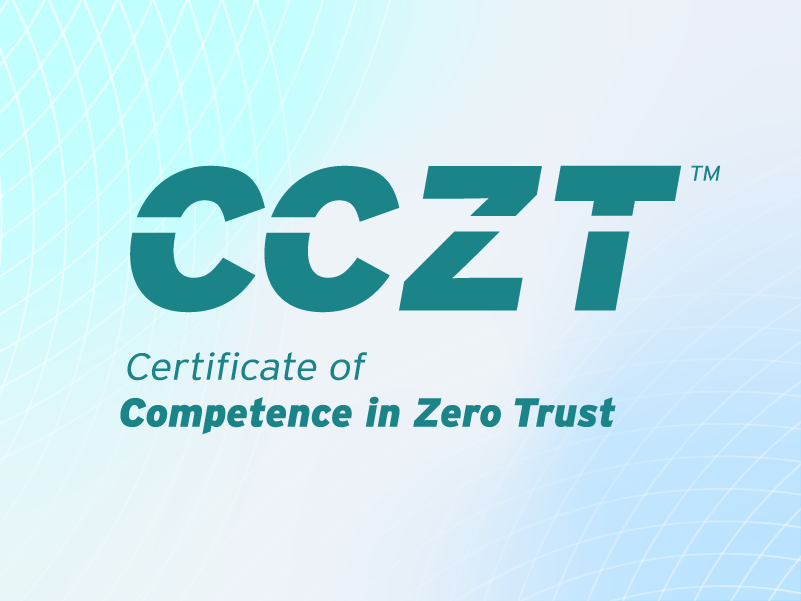The Shift to Risk-Based Data Security Posture Management
Published 03/03/2025
Modern data environments are becoming increasingly complex and organizations have come to realize that traditional compliance-driven cybersecurity strategies are no longer sufficient. Instead, a growing number of companies are adopting a data-centric approach that emphasizes proactive risk reduction.
CSA and Thales's latest survey report, Understanding Data Security Risk, shows how this shift is transforming data security posture management (DSPM). Below, learn more about these emerging trends.
Risk-Based Approaches to Data Security
Threats are more sophisticated than ever thanks to the cloud, the advent of generative AI used to create exploits, and many other factors.
Compliance frameworks provide a useful baseline to protect against these attacks. However, they can also influence teams to focus on checking a box instead of actively reducing risks.
Security teams are realizing that compliance efforts aren't serving their purpose. Non-compliance costs are now three times higher than compliance investments. Additionally, organizations face average data breach costs of $4.88 million per incident.
Alternatively, risk-based approaches focus on mitigating the risk factors that could have the highest impact on an organization. This enables effective decision-making and resource allocation that results in real change.
Risk-based approaches are all about proactivity instead of reacting to mandates or breaches. The goal is to predict and mitigate risks before anyone can exploit them.
The Understanding Data Security Risk survey report hints at the strategic shift toward risk-based thinking. The report found that identifying vulnerabilities (7.06) and prioritizing vulnerabilities (6.15) are prime concerns for organizations. This far surpasses the need to change policies and controls (3.62).
As organizations increasingly migrate to the cloud, the complex and dispersed nature of cloud environments creates significant challenges related to managing vulnerabilities, understanding risks, and protecting sensitive data. To effectively mitigate these threats, organizations must employ a unified approach to security across all cloud platforms and systems.
Other key findings from the Understanding Data Security Risk survey report include:
- Gaps in Understanding Risk: Many organizations lack the tools and confidence to identify high-risk data sources. An unfortunate 31% report insufficient tooling, while only 20% express high confidence in their ability to address these risks.
- Misaligned Priorities: Diverging focuses between management and staff create inefficiencies. Executives prioritize aligning security efforts with broader business objectives, while operational teams face resource constraints and rely heavily on manual or semi-automated processes.
- Inefficient Tools: Over half of organizations use four or more tools to manage risks. This leads to inefficiencies and conflicting information. Traditional compliance and security tools, while essential, often lack the scalability and integration needed for modern and effective risk management processes.
- Compliance vs. Proactive Strategies: Compliance remains a primary driver for risk reduction (59%). However, a heavy focus on regulatory adherence often leaves organizations unprepared for emerging threats.
The Emphasis on Data: Data Security Posture Management
Data security posture management (DSPM) provides visibility as to:
- Where sensitive data is
- Who has access to that data
- How it has been used
- What the security posture of the stored data or application is
DSPM does this by:
- Assessing the current state of data security
- Identifying and classifying potential risks and vulnerabilities
- Implementing security controls to mitigate these risks
- Regularly monitoring and updating the security posture to ensure it remains effective
As a result, DSPM enables businesses to maintain the confidentiality, integrity, and availability of sensitive data. The typical users of DSPM include IT departments, security teams, compliance teams, and executive leadership.
DSPM requires security teams to go beyond their usual practices. They must assess the potential impact of each vulnerability associated with data assets and unusual access behaviors, while also assessing the level of data sensitivity. Then, they prioritize their remediation efforts according to the level of risk. This approach ensures that teams address the most critical potential threats first.
The survey findings highlight that vulnerability patch rate (36%) and security violations (35%) are now key performance indicators over traditional compliance violations (29%). Organizations are coming to understand that gaining visibility of data risks and reducing data asset vulnerabilities enhances their resilience.
Looking to the Future
To effectively implement modern risk-based and data-centric strategies, organizations are planning significant investments over the next 12 to 18 months. These investments will be in three key areas:
- Training Staff (66%) – Most respondents (80%) do not feel highly confident identifying high-risk data sources. Training employees empowers them with the knowledge to recognize and mitigate risks.
- Streamlining Processes (51%) – When asked about their top challenges when identifying risks, 48% of respondents cite limited staffing. Along with this, 46% point to a lack of automation, relying on manual processes instead. Enhancing operational efficiency with automation solutions helps strained organizations respond faster to emerging threats.
- Consolidating Tools (47%) – Over half of organizations (54%) use four or more tools to manage data risks. This fosters further inefficiencies and conflicting information that hinders effective decision-making. Adopting integrated solutions that provide better visibility and control will help reduce complexity.
Here are some examples of how these focus areas can translate into concrete strategies:
Training Staff
Security Awareness Programs: Conduct role-specific cybersecurity training tailored to different departments. For example, developers receive training on secure coding practices, while executives learn how data risks impact the bottom line. This empowers staff to recognize potential risks relevant to their roles and fosters a security-conscious culture.
Continuous Learning Platforms: Implement e-learning platforms for ongoing cybersecurity education. Include modules on understanding data risk management strategies.
Streamlining Processes
Risk-Based Prioritization: Develop workflows that prioritize remediation efforts based on risk scores, such as CVSS. Conduct business impact assessments that enable teams to focus on the vulnerabilities that pose the greatest risk.
Automated Vulnerability Triage: Use automation tools to categorize and assign vulnerabilities to the appropriate teams in real-time. This reduces manual effort and speeds up the remediation process.
Integrated Incident Response Plans: Align incident response playbooks with risk-based strategies. Ensure that high-risk vulnerabilities trigger predefined, rapid-response actions. This enhances incident handling efficiency and helps minimize damage.
Consolidating Tools
Unified Security Platforms: Adopt platforms that provide end-to-end visibility and centralized management of threats and incidents. These platforms reduce complexity and enhance visibility across the entire security landscape.
Centralized Risk Management Dashboards: Implement dashboards that consolidate data from multiple security tools, presenting a unified view of risk assessment metrics and vulnerability statuses. These dashboards facilitate better decision-making by providing actionable insights at a glance.
Reducing Redundant Tools: Consolidate multiple legacy compliance tools and vulnerability scanners into a single solution that supports risk-based prioritization. This decreases costs, simplifies management, and improves efficiency.
Conclusion
Data environments continue to evolve. Threats are becoming more sophisticated. Regulatory landscapes are growing more complex.
Organizations must shift toward proactive, risk-based and data-centric approaches that prioritize dynamic risk evaluation, vulnerability management, and adaptability to evolving threats. By doing so, they can not only strengthen their resilience, but also achieve compliance as a natural outcome. This approach is not just about security—it's about ensuring the long-term success of the organization.
Deepen your understanding of data risk management by checking out our latest survey report.
Related Resources



Unlock Cloud Security Insights
Subscribe to our newsletter for the latest expert trends and updates
Related Articles:
Closing the Cloud Forensics and Incident Response Skills Gap
Published: 12/16/2025
Enhancing the Agentic AI Security Scoping Matrix: A Multi-Dimensional Approach
Published: 12/16/2025
Understanding the DoD’s New Cyber Security Risk Management Construct (CSRMC)
Published: 12/15/2025
Beyond Workday: Why Socially Engineered SaaS Breaches Are Spreading
Published: 12/15/2025


.png)
.jpeg)
.jpeg)
.jpeg)
.jpeg)